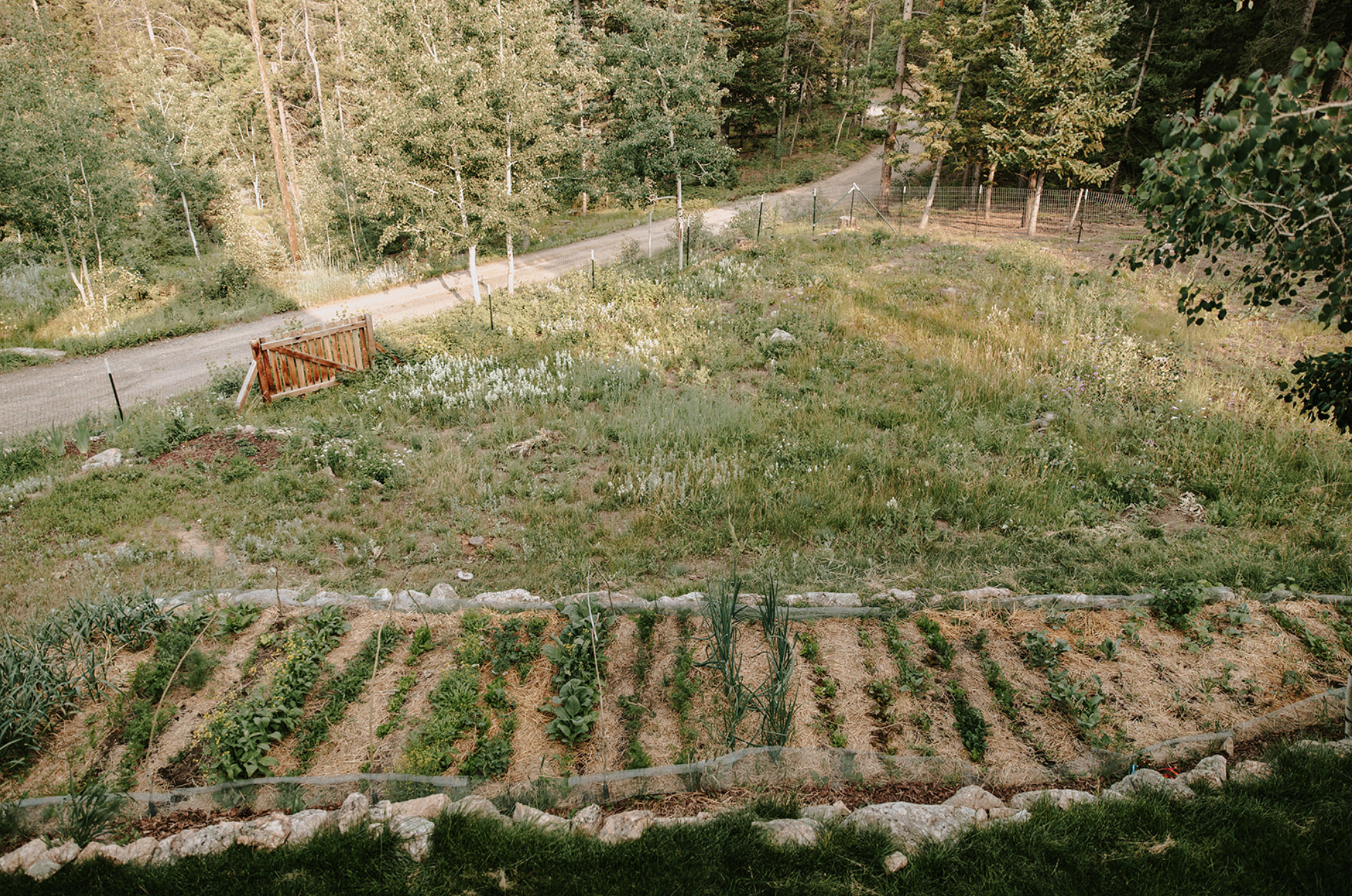High Altitude Gardening
Essential tips for successful gardening at hight altitudes.
I’m grew up in the Midwest in a family with a lot of green thumbs. We call that area of the country the Fertile Crescent of America because of how rich the soil is and therefore how easy it is to grow food. I now call the Rocky Mountains home and gardening has been, shall we say, a great learning experience for me so far. To support others like myself with an unrelenting drive to grow things and eat them, I share with you a few tips I’ve learned over years.
Before you even think of growing anything in the mountains, think about how you will keep out the hungry wildlife that surrounds your garden. The higher the altitude, the less available foods sources there are for wildlife and therefore, the more pests you will have coming to feast on your garden. In the Nederland area we contend with voles, moles, mice, squirrels, chipmunks, deer, elk and moose.
FENCING
It is only a matter of time before voles and moles will find your garden and they have a great capacity to decimate it from underground. Therefore, the first step is to line the garden with hardware cloth. You will need to bury the hardware cloth 2 feet deep and have it rise 12 inches above ground. Some people just have a buried hardware cloth fence as a perimeter around the garden but I recommend having the hardware cloth continue under the garden as well.
To keep out the larger wild animals living in these mountains, elk, deer and moose, you will need a tall, sturdy fence. These animals can jump high, so the fence need to be 8 ft tall with wooden or metal supports every 4-8 ft.
SOIL
The soils here in Colorado are dry and tends to be alkaline, so consider investing time to amend the soil. To make the soil more amenable for growing vegetables, I recommend a few additives. Primarily, add well composted animal manure. There are lots of people in the mountains with animals, so ask around your neighborhood and I’m sure you will find someone who is more than happy to have your haul away manure. Add enough composted manure so that it makes up 1/3 of your soil base. I also recommend adding peat moss to increase the acidy and help retain moisture. Then add pine needles, which help to aerate the soil and keep it from become too compact. Pine needles are all around this area, so just rake up a pile in your yard or a nearby forest.
PLANTING
Finally, you can start thinking about planting seeds or starts. For tips on starting your own plants indoor, see my article on Garden Starts. Check out my Planting Guide for ‘what to plant when’ in Nederland, CO.
COVER
Once you have your seeds and plants in the garden, I recommend protecting them with a fabric row cover. This layer of protection serves a number of purposes. We have fluxuating temperatures in the mountains during spring and this cover will keep plants warmer than the outside temperature as well as protect them from the wind, hail and snow. It will also keep plants moist while they are germinating and growing, a time when they can easily dry out. This step is also very useful to keep the mice, squirrels and chipmunks from eating your sprouting plants. They are hungry in early spring, when there is not a lot of wild food available, and will eat anything that is young and tender.
Once the plants have grown a few inches and temperatures have warmed, remove the row cover. I recommend replacing it with bird netting. Bird netting will continue to detour these pests but allow the plants to get full sunlight.
WATER
The last elements to successfully garden at high altitude is water. Water is such a precious resource in our arid climate, so it’s imperative we conserve when possible. To conserve water, set up drip hoses or sprinklers on a timer to run in the early morning before sunrise. Watering at this time mimics the natural process of dew forming and keep the water from evaporating in the sunlight. To further conserve water and keep weeds down, generously mulch plants once they are a couple of inches tall. Good mulch feeds the soil, suppress weeds and retains moisture. You can purchase straw bales or wood chips from most feed stores for mulch. For a DIY mulch alternative, rack up pine needles and other debris in your yard and save it to use as mulch.









